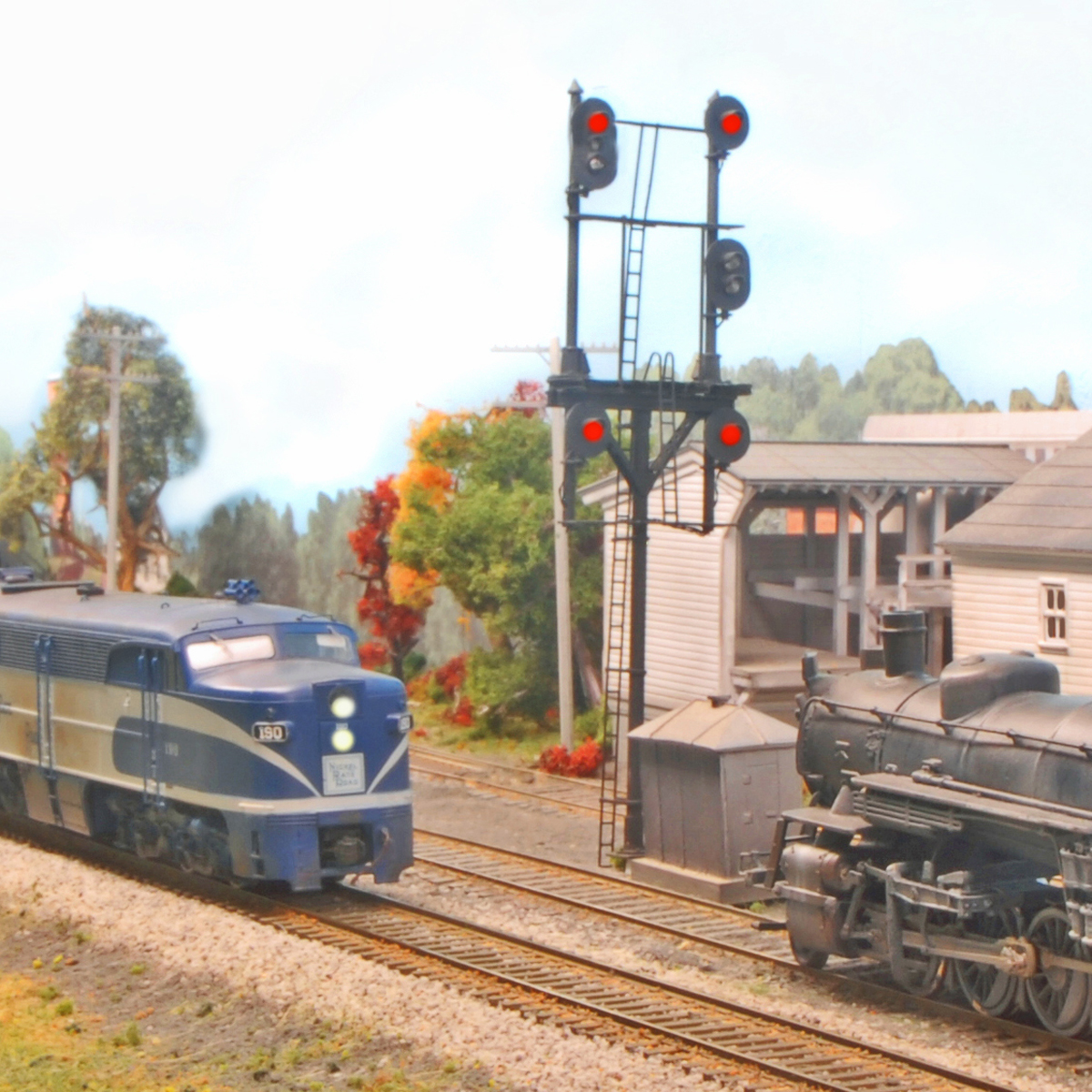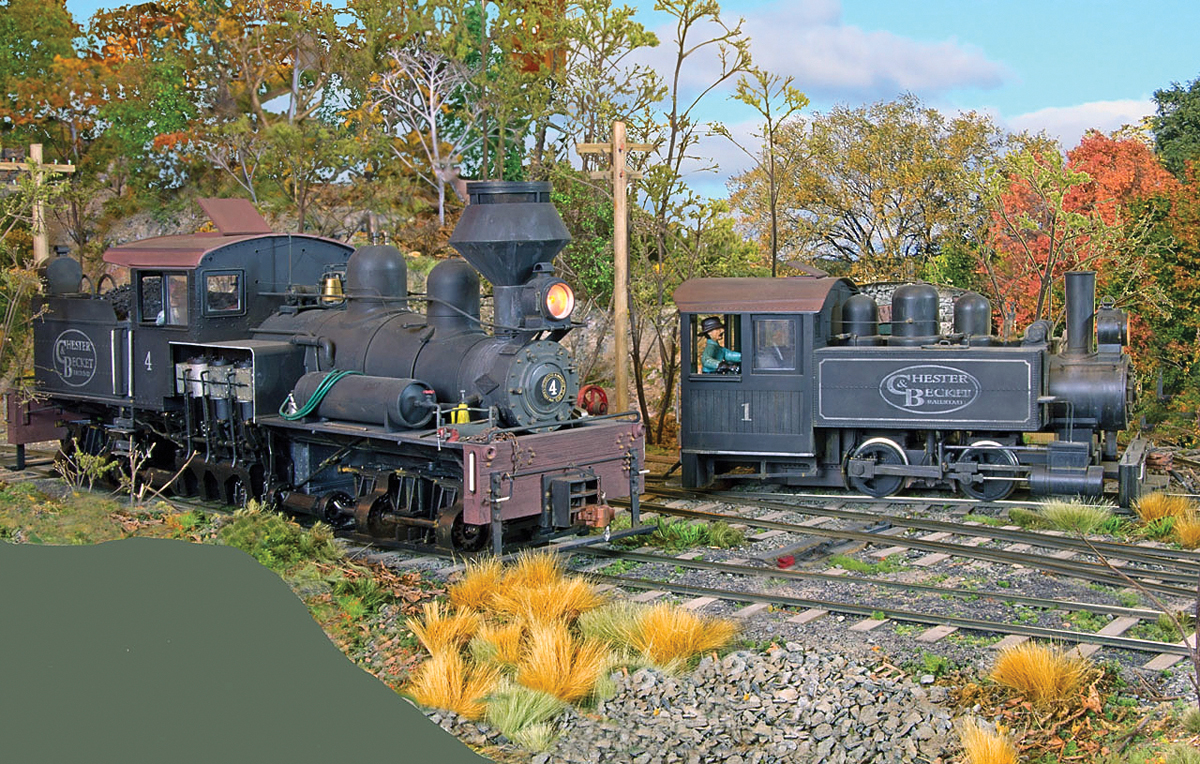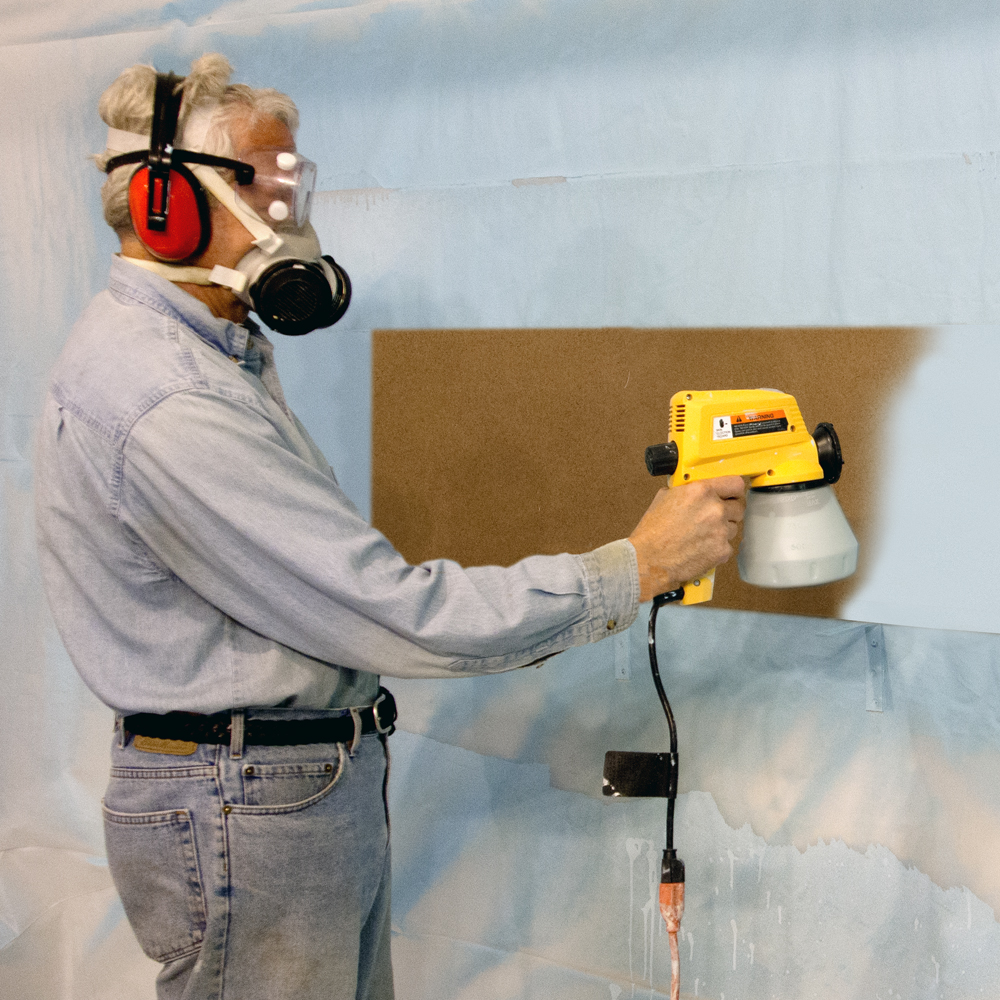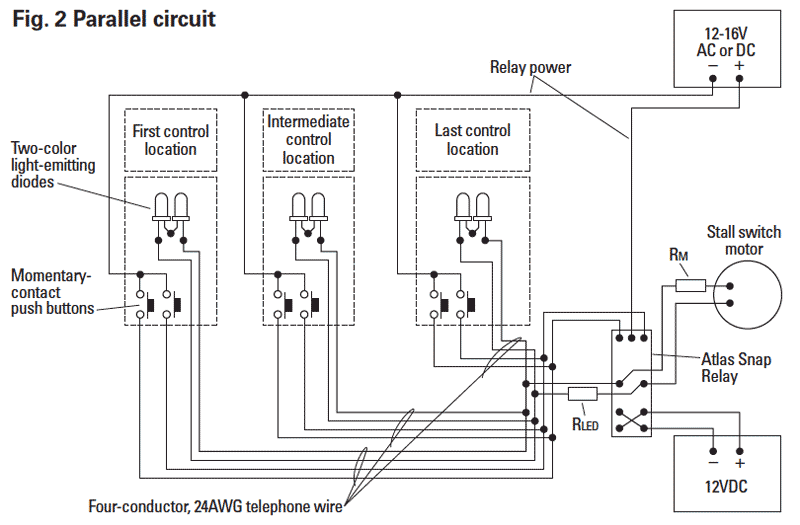
Q: I’m wondering how to control turnouts with momentary switches. Does a momentary SPDT toggle return to center off after it throws the switch machine? If so, will a light-emitting diode (LED) connected to the toggle stay on? — Ron Vowles
A: It depends on how you wire it. A momentary single-pole double-throw (SPDT) toggle routes current one way or the other when you’re holding it and returns to its center-off position when released. An application you might be familiar with would be the switch that controls a car window. A slow-motion “stall motor”-type switch motor, like a Tortoise by Circuitron, requires continuous voltage to keep it in position, in either direction. So a momentary switch won’t work to control this kind of switch motor as it is. But you can use a momentary SPDT switch to control an old-fashioned solenoid switch machine or a servo-based machine, neither of which requires a continuous current. However, a light-emitting diode (LED) won’t light when the current cuts off, so an indicator light on this kind of switch machine takes separate wiring, like a relay with its own power supply. (Conveniently, some servo-based switch machines, like one from Walthers Control System, have built-in outputs to drive indicator LEDs.)
Similarly, you can use a momentary SPDT to trigger a relay or similar circuit that will power a stall-motor-type switch motor. In this case, an indicator LED hooked into the wiring between the relay and the switch motor will stay lit. It might be easier and cheaper to just control this kind of switch machine with a non-momentary switch.
However, there is one good reason you might want to use momentary switches to control a stall-motor-type switch machine, and that’s so you can control a turnout from more than one location. For example, you might have a large yard that you want to be able to route a train through from both ends. Or you might want to be able to line turnouts both from trackside and from a central dispatcher’s desk. In a case like that, you can control a switch machine with a relay and use momentary switches to trigger the relay from multiple locations. Author Bob Kingsnorth shows how to do this in his article “Control turnouts from multiple locations” in our September 2010 issue.
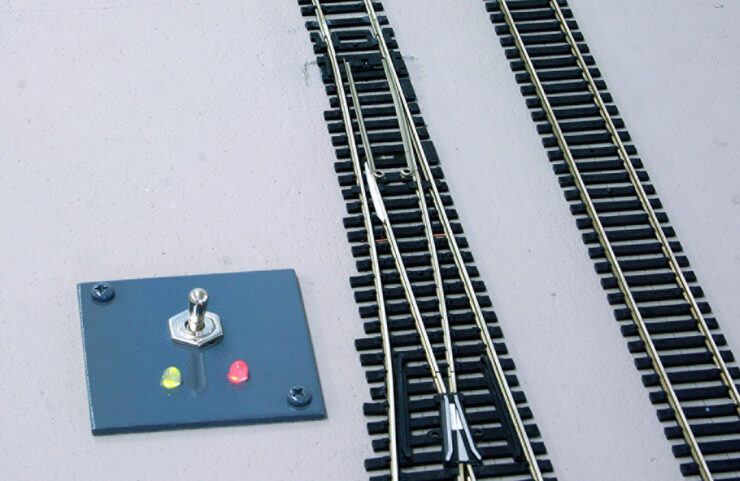
Send us your questions
Have a question about modeling, operation, or prototype railroads? Send it to us at AskTrains@Trains.com. Be sure to put “Ask MR” in the subject.






